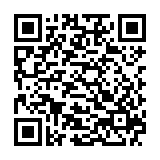The world of language services has undergone a revolution in recent years, thanks to advancements in artificial intelligence (AI) and automation. From translation and transcription to subtitling and interpreting, these technologies are transforming the way businesses and individuals communicate across linguistic and cultural barriers. But what exactly are AI and automation bringing to the table for language services? Let’s explore how AI and automation in language services are creating exciting opportunities that await in the very near future!
The Rise of AI and Automation in Language Services
AI is the driving force behind many of the innovations in language services. With its ability to process vast amounts of data and learn from patterns, AI enables tools to perform tasks that once required human expertise.
1. Machine Translation (MT)
Machine translation tools like Google Translate and DeepL are powered by AI algorithms. These systems analyze text in one language and generate translations in another, often in seconds.
2. Speech Recognition and Transcription
AI-powered tools like Otter.ai and Rev can convert spoken language into text with impressive accuracy. This has revolutionized fields like media, education, and legal documentation.
3. Natural Language Processing (NLP)
NLP allows AI systems to understand context, tone, and sentiment in language. This is crucial for generating translations or content that feel natural and culturally appropriate.
Benefits of AI and Automation in Language Services
1. Speed and Efficiency
AI can process and translate large volumes of text in a fraction of the time it takes humans. For businesses handling global operations, this speed is a game-changer.
Example: An e-commerce brand can instantly localize product descriptions for multiple markets, enabling faster global launches.
2. Cost-Effectiveness
Automation reduces the need for large teams of human translators or transcribers, significantly lowering costs.
3. Scalability
AI-driven tools can handle increasing workloads without compromising on quality. This makes it easier for businesses to scale their language needs as they grow.
4. Consistency
AI tools ensure consistent use of terminology and style, which is especially important for branding and technical documentation.
Key Applications of AI and Automation in Language Services
1. Automated Translation and Localization
AI-powered translation software can handle multilingual content quickly. When combined with localization tools, it ensures cultural and linguistic nuances are respected.
Example: A travel app can offer user-friendly instructions in dozens of languages, tailored to each audience’s cultural preferences.
2. Real-Time Interpreting
AI is making real-time interpreting accessible through tools like Google Meet’s live captions and Microsoft Translator. These innovations are particularly valuable for international conferences and meetings.
3. Subtitling and Dubbing
AI tools like Sonix and Trint automate the process of creating subtitles for videos. Some platforms even use AI to generate synthetic voices for dubbing, allowing content creators to reach multilingual audiences more efficiently.
4. Chatbots and Customer Support
Multilingual chatbots powered by AI can provide customer support in real-time, answering questions in various languages without human intervention.
Challenges and Limitations of AI and Automation in Language Services
While AI and automation have brought remarkable advancements, they are not without challenges.
1. Accuracy and Context
AI sometimes struggles with idiomatic expressions, slang, or highly technical jargon. Human expertise is often needed to refine these translations.
2. Cultural Sensitivity
Language is deeply tied to culture. Automated tools may miss subtle cultural nuances that a human translator would catch.
3. Data Privacy Concerns
AI tools often require access to large datasets, raising questions about how sensitive information is stored and used.
4. Dependency on Human Oversight
For complex tasks like legal or medical translations, human oversight remains essential to ensure precision and compliance.
The Perfect Pair: Humans and AI
Rather than replacing human professionals, AI and automation complement their skills. The combination of human expertise and AI efficiency creates a hybrid model that offers the best of both worlds.
1. Post-Editing of Machine Translation (PEMT)
Human linguists review and refine AI-generated translations to ensure accuracy and cultural appropriateness.
2. Creative Projects
Tasks that require a human touch, such as marketing copy or literary translation, benefit from AI tools assisting with initial drafts.
Future Trends in AI and Automation for Language Services
1. Improved Context Understanding
As AI systems become more advanced, they will better understand context, making translations and transcriptions more accurate.
2. Voice Cloning and Synthetic Speech
AI-powered synthetic voices are becoming more natural, paving the way for personalized, multilingual voice assistants and dubbing services.
3. Enhanced Real-Time Capabilities
Advancements in real-time processing will improve interpreting tools, enabling seamless communication during live events.
4. AI Ethics and Fairness
The industry will focus on ethical AI use, ensuring transparency, data security, and inclusivity in language tools.
Final Thoughts
AI and automation are reshaping the language services industry, making it faster, more efficient, and accessible. From instant translations to real-time interpreting, these technologies empower businesses and individuals to connect across linguistic boundaries like never before.
However, human expertise remains indispensable for tasks requiring creativity, cultural sensitivity, and precision. The future lies in a harmonious collaboration between humans and AI, ensuring that language services continue to evolve while maintaining their human touch.
As AI and automation advance, one thing is clear: the potential for innovation in language services is limitless. Whether you’re a business expanding globally or an individual exploring new cultures, these tools make communication simpler, faster, and more inclusive.





0 Comments